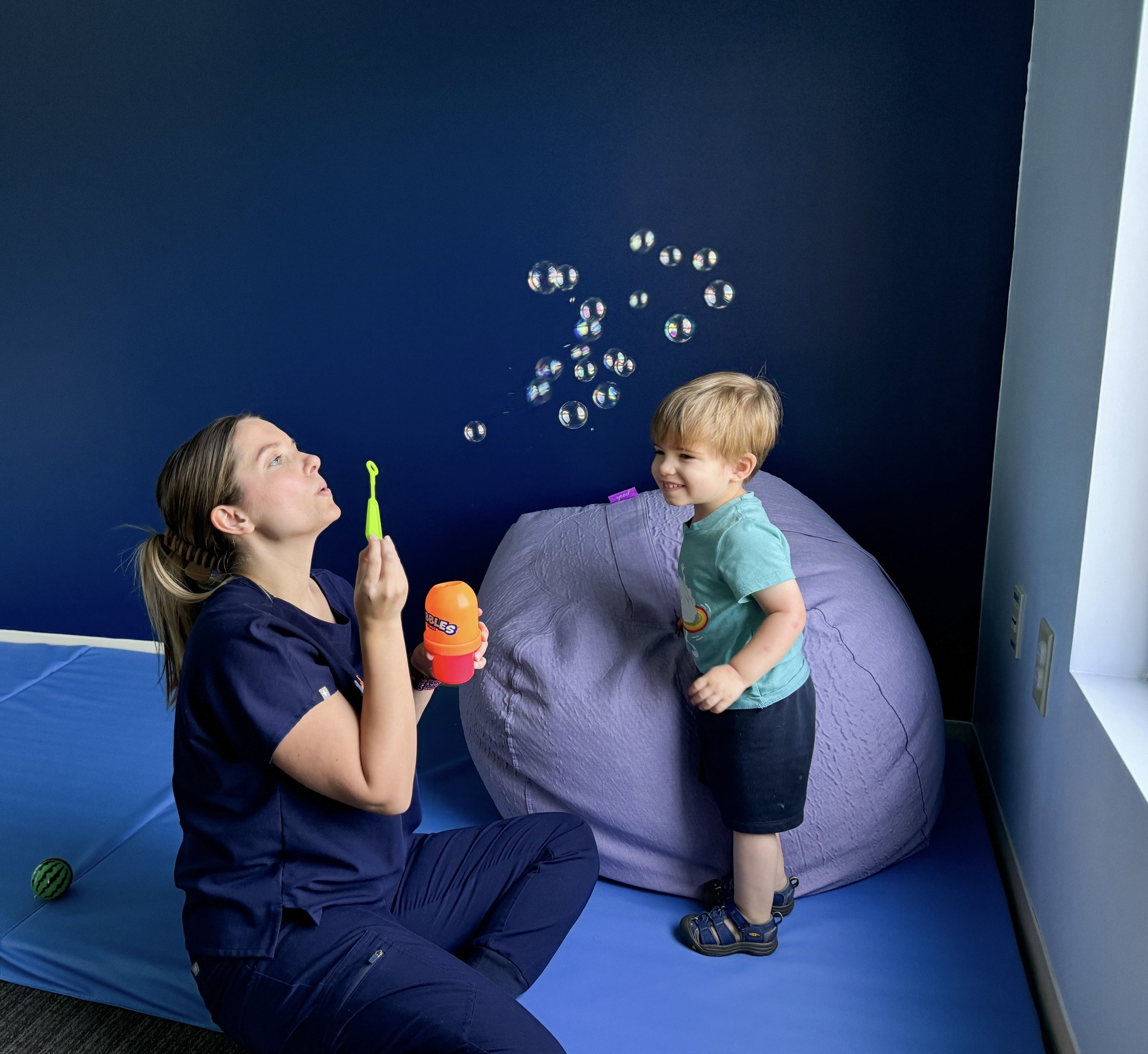Gestalt Language Processing (GLP)
There are two types of natural language development:
Analytic Language Processing has been considered the traditional or “correct” way to acquire language. Analytic Language Processing refers to those who learn to produce single words and attach meaning to those single words. For example, a young child may learn to say “milk” when they are thirsty. Once a child has developed enough single words, they will begin to combine those words. For example, they may say “more milk.” They continue building on those single word utterances until they are able to create spontaneous self-generated sentences and conversation.
Gestalt Language Processing has been recognized as another natural way to acquire language. The difference is that Gestalt Language processors learn language in chunks and assign meaning to these chunks (or gestalts) of language. They typically acquire these gestalts from TV shows, videos, or something someone else said. These children do not recognize the meaning of the single words within their gestalt. Rather, they view the gestalt as having a meaning as a whole. For example, a child might produce the gestalt “it’s time to go to school” each time they leave or someone else leaves because they heard their mom say it when it was time for school. They have assigned this gestalt as meaning “leave",” but they are unable to use different words or gestalts to talk about “leaving.”
Research shows that many, if not all, autistic children are Gestalt Language Processors. However, research also show that children who are not autistic can also be Gestalt Language Processors.
So, how can we help gestalt language processors learn to produce spontaneous, self-generated language? We use an approach called Natural Language Acquisition (NLA). This is a therapeutic approach that uses a child-led, play-based approach. The stages of NLA are listed below:
Stage 1: Echolalia. This is when a child frequently produces the same gestalts over and over that they have picked up from a show, video, or something someone said to them. These are also sometimes called “scripts.”
Stage 2: Mitigated Gestalts. This is when a child starts to “mix and match” their gestalts.
Stage 3. Single Words. This is when a child begins to use single words from their gestalts and recognize these words as having meaning.
Stage 4: Beginning grammar and more complex sentences. This is when children begin to produce self-generated language by using original sentences. A hallmark sign of this stage is bad grammar.
Stages 5+: Sentences continue to become more complex and grammar improves.
Your therapist will help determine which stage your child is in and help move them through the stages towards self-generated language. We will be hosting parent/caregiver groups to talk about how to support your gestalt language processor on their journey towards spontaneous, self-generated language!
Where to find more helpful info:
Meaningful Speech has a great website and social media pages about GLP!
Marge Blanc played a role in the pioneer work for GLP. Check out what she has to say!
Check out the NLA Trained Clinician Registry to find a therapist near you!


